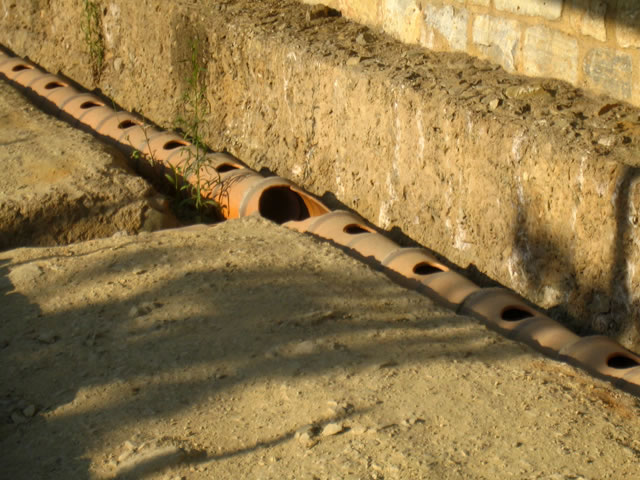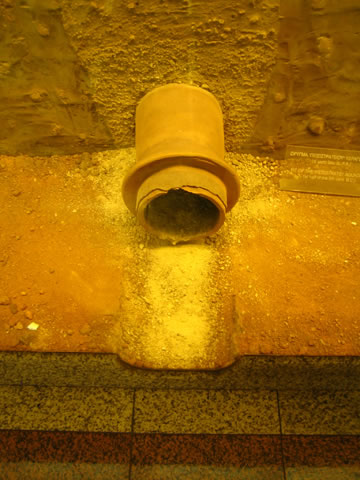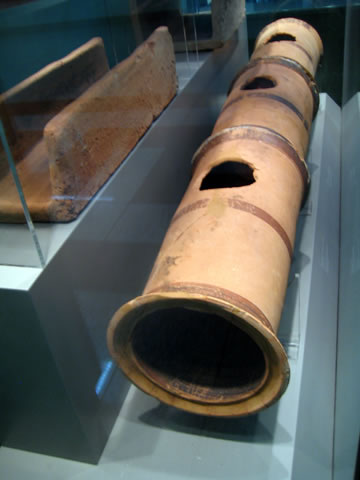Waterworks
Between 540 BC – 530 BC, the tyrant Peisistratus tookon an impressive and extremely important technical task for the water supply of Athens city, bringing water from the springs at the foot of Ymittos Mountain. The greatest part of it was carved as a tunnel, at a depth reaching 14 m. In other parts it was constructed as a channel, either carved into the schist rocks or made from stone masonry, with a depth of 1.30 – 1.50 m and a width of 0.65 m. At the bottom of the tunnel or channel, a pipeline with ceramic sections and orientation engravings was placed.

Hydria Virtual Museum
The cylindrical clay pipes with an inner diameter of ~ 20 cm had elliptical openings (hand-holes) in their upper part, covered by ceramic covers, for cleaning and maintenance. The pipes were painted with black stripes and were connected to each other by couplings of exceptional design: the joints were tightly fit and sealed with lead in order to make them impermeable. Following Peisistratus, the network was conserved and extended, and during the democracy of the Classical period it would be enriched with the construction of new fountains.
Large parts of the Peisistratos’ aqueduct were found during the excavations for the construction of the Athens metropolitan subway, and parts of it are exhibited in the metro stations of Syntagma and Evangelismos.
The part of the pipeline that was discovered at Syntagma, dates from the first half of the 5th century BC, and is therefore believed to be a later extension or a branch of the initial aqueduct. In the Syntagma Metro station three clay pipes can be seen, as well as the pit of the aqueduct. Another part of the pipeline is on display just outside the station.
The clay pipes exhibited in the metro station of Evangelismos date from the end of the 6th century BC. They have hand-holes for maintenance purposes and also engravings of letters of the alphabet, that are believed to have served for the correct collocation of the pipes. The use of letters for “numbering” is the element that allows us to assume the period of construction of these pipelines. This part of the pipeline is believed to belong to the main line of the aqueduct.









